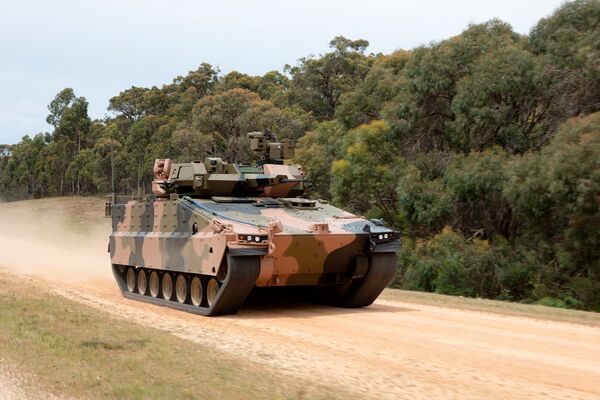
Australia has reduced its procurement of infantry fighting vehicles from 450 units to 129. Two platforms are competing for the tender – Rheinmetall's Lynx KF41 and, pictured above, Hanwha's Redback. (Hanwha Defense Australia)
Australia has announced the establishment of an external advisory panel (EAP) to oversee the implementation of the Defence Strategic Review (DSR) recommendations, which include a reorganisation of the Australian Army.
The EAP will provide an independent assessment of the DSR's progress biannually to the government, the Australian Department of Defence (DoD) said in late May. Richard Marles, deputy prime minister of Australia, said, “The appointment of the EAP reflects the government's commitment to the implementation of the DSR.”
The DSR – released in late April – made recommendations including the procurement of long-range missiles and nuclear-powered submarines, the development of disruptive technologies, and the restructuring of the Australian Defence Force (ADF) into a “fully integrated and more capable force”.
The ADF restructure will also prompt a substantial change in the force posture and organisation of the Australian Army. The army restructure is expected to result in a decrease in conventional land-platform procurements in order to make room for littoral manoeuvre vessels (including medium and heavy landing craft) and long-range fires (land-based maritime strike) programmes.
“[The] army must be optimised for littoral operations in our northern land and maritime spaces and provide a long-range strike capability,” the DSR said. The DSR also outlined the Australian Army's capability priorities as including:
The DSR continued that the restructure of the Australian Army “must result in significant changes to army force posture and structure. [The] army's combat brigades must be reroled and select capabilities postured in northern Australia”.
Looking to read the full article?
Gain unlimited access to Janes news and more...







